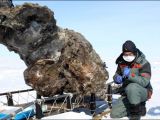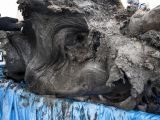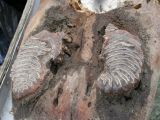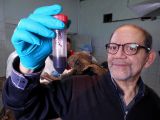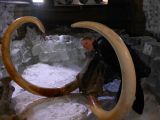Last year, towards the end of May, the carcass of a woolly mammoth was discovered in Siberia. Unlike other woolly mammoth remains uncovered until then, this one was exceptionally well preserved. In a nutshell, researchers say that the meat was fresh enough to eat.
What's more, it is understood that, when found, the carcass was lying on top of some ice cavities containing a deep red liquid that researchers identified as mammoth blood.
After being pulled out of the Siberian permafrost, the woolly mammoth corpse was entrusted to paleontologists in Russia, who got to work autopsying it. Tissue and blood samples, on the other hand, were sent to laboratories in South Korea and the US.
By the looks of it, researchers in South Korea and at the US' Harvard University are now hard at work trying to make heads or Tails of the long-lost creature's genetic makeup in the hope that they might be able to clone it.
Their work is detailed in a documentary, i.e. “How to Clone a Woolly Mammoth,” set to air this coming November 29 at 8 p.m. ET/PT on the Smithsonian Channel.
A one-of-a-kind woolly mammoth carcass
At the time it was discovered, about a year and a half ago, the woolly mammoth corpse was said to be about 10,000 years old. However, evidence obtained with the help of carbon dating techniques indicates that the animal actually lived and died some 40,000 years ago.
As already mentioned, the carcass was discovered in the Siberian permafrost. When researchers first laid eyed on the animal, its tusks were sticking out of the ground. The lower part of its body, on the other hand, was encased in ice.
The woolly mammoth was a female. The animal is believed to have passed away when 50 or maybe 60 years old, most likely after becoming trapped in a peat bog while trying to escape predators, Live Science informs.
Since one of its legs was nowhere to be found and its trunk was resting at a considerable distance from the rest of its body when specialists found it, it would appear that, despite its best efforts to make a daring escape, the animal was pretty much eaten alive.
Cloning a woolly mammoth
Given how well preserved this carcass found in Siberia is, scientists hope that, with a little bit of luck and tons of hard work, they will manage to obtain DNA from it. Should they manage to get their hands on a copy of the creature's genome, they might be able to clone it.
Mind you, the brainiacs working on this ambitious project are yet to recover undamaged DNA from the corpse. Still, they claim to have so far obtained several fragments that, if put together, could make it possible for them to recreate the woolly mammoth's genome.
They further explain that, should they fail to obtain a complete sample of undamaged woolly mammoth DNA, they could at least try to graft the genetic cues for hair, tusks and other features only documented in this species into the genome of an elephant.
Simply put, the bits and pieces of woolly mammoth genome they have until now documented could help them recreate the animal by toying with the genetic makeup of its modern-day relative, the elephant. The thing is that, even if this sounds easier to do, success is not guaranteed.
If we're going to be honest here, it must be said that plenty of people would love to be given the chance to come face to face with a living and breathing woolly mammoth. Hence, here's hoping that scientists will eventually manage to make us one.
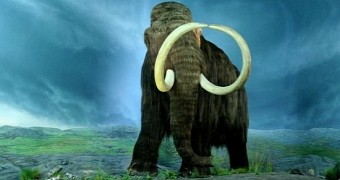
 14 DAY TRIAL //
14 DAY TRIAL // 
